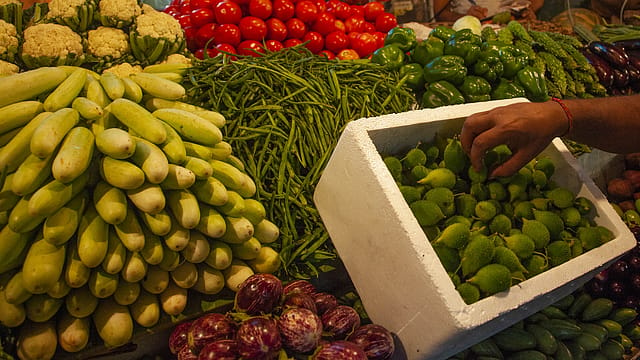RBI warns of cautious monetary policy approach if food inflation persists
ADVERTISEMENT

The Reserve Bank of India (RBI) in its monthly bulletin warned that if food inflation persists a more cautious monetary policy approach is warranted to squelch the propagation of food inflation pressures into a more generalised inflation.
Core inflation has been declining since 2022-23, mainly driven by monetary policy actions and stance and the waning of cost-push shocks. Food price shocks have been imposing upside pressures on core inflation throughout these years, but this has been offset by disinflationary monetary policy, the paper notes.
Should this disinflationary force recede, upward pressures on core and headline inflation could get magnified and may run out of control, especially with aggregate demand picking up alongside cost-push risks looming in the wake of geo-political tensions, the RBI paper warns.
“Going forward, therefore, if food price pressures persist and continue to spill over, a cautious monetary policy approach is warranted,” the RBI article notes.
“The conventional treatment of food price perturbations as transitory in the setting of monetary policy is increasingly becoming untenable. A large part of this increase in persistence is driven by the secular upward drift in food inflation expectations. Past high food inflation episodes – intrinsic persistence – have a bearing in shaping these expectations. The inelasticity of the demand for food to price shocks makes food inflation persistence all the more worrying,” the RBI paper authored by Michael Debabrata Patra, Joice John and Asish Thomas George notes.
December 2025
The annual Fortune 500 India list, the definitive compendium of corporate performance, is out. This year, the cumulative revenue of the Fortune 500 India companies has breached $2 trillion for the first time. Plus, find out which are the Best B-schools in India.
With spillovers to costs, service charges and output prices, the danger of food inflation surfacing as a more generalised phenomenon has increased, the paper notes.
“Under these circumstances, the sources of food price shocks may lie outside the realm of monetary policy but when they result in food inflation acquiring persistence and spilling over into other components of inflation and into consumer behaviour, monetary policy must be disinflationary to quell these price pressures in order to achieve its mandate of price stability and thereby retain credibility,” it says.
“Failing to act against persistent food inflation risks expectations getting unanchored, generalisation of price pressures and loss of control over inflation, undermining of consumer and business confidence, and erosion of external sector sustainability and competitiveness, with deleterious consequences for growth prospects,” the article notes.
India’s retail inflation hit its lowest rate in nearly five years at 3.54% in July. Rural inflation stood at 4.10%, while urban areas recorded an inflation rate of 2.98%. Food inflation in July 2024 dropped to 5.42%, its lowest level since June 2023, down sharply from 11.51% a year ago and 9.36% in June. Rural and urban areas recorded corresponding inflation rates of 5.89% and 4.63%, respectively. Significant declines were observed in the prices of vegetables, fruits, and spices across all groups during the month.
The RBI in its monetary policy committee (MPC) meeting opted to hold the policy rates and stance for the seventh straight time on the trot in August.
